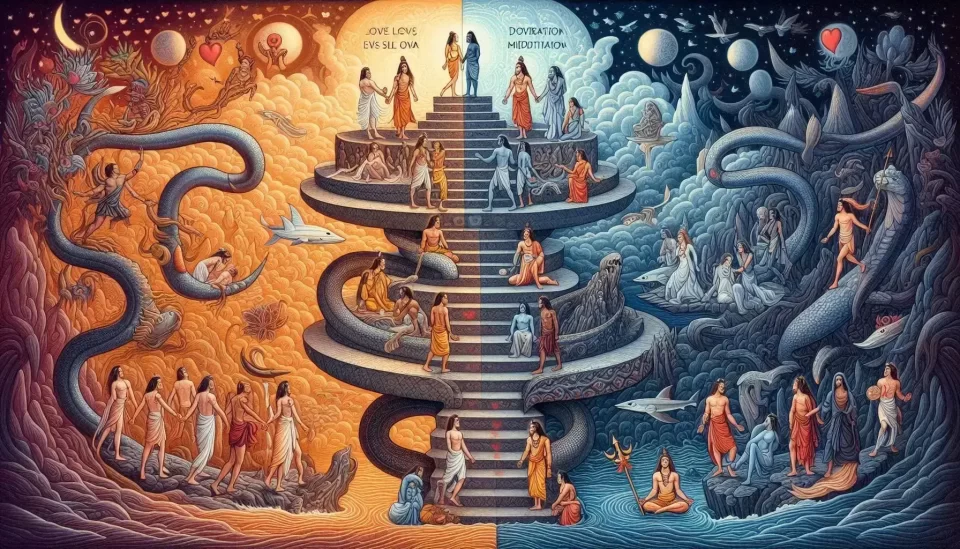Understanding the Two Paths in Tantra
When it comes to Tantra, two significant figures, Shiva and Saraha, offer distinct approaches. Shiva vs. Saraha Tantra is a fascinating exploration of these paths, each leading to the same spiritual goal. However, the journey and method differ greatly. Let’s dive into the nuances that set these two approaches apart.
Shiva’s Approach: Devotion and Love
Shiva’s Tantra is centered on devotion and love. This path speaks to those who feel deeply connected to their emotions. Practicing Shiva’s Tantra involves transforming feelings into pure love, free from negativity. As you progress, you transcend possessiveness and jealousy, reaching a state of pure, divine love.
On this path, the devotee (Bhakta) and the deity (Bhagwan) appear separate. However, as love deepens, this distinction fades. Ultimately, the self dissolves into the divine, creating a unity where neither the lover nor the beloved exists independently. This merger is the essence of Shiva’s Tantra, where duality ends, and oneness is achieved.
Saraha’s Approach: Meditation and Awareness
In contrast, Saraha’s Tantra focuses on meditation and awareness. This path is ideal for those who are more intellectually inclined and seek to transcend the mind. Saraha’s method involves gradually letting go of thoughts, eventually leading to a state of no-thought or emptiness, known as Shoonya.
Saraha’s path is about dissolving the mind’s constructs, including the concepts of “I” and “Thou.” As a practitioner, you aim to reach a point where both self and divine disappear into nothingness. This merging of two zeros symbolizes enlightenment in Saraha’s Tantra.
The Common Goal: Spiritual Disappearance
While Shiva vs. Saraha Tantra may seem different, both paths aim for the same ultimate goal: spiritual disappearance. Whether through love or meditation, the end result is the dissolution of the self into the divine. The individual ego is transcended, leading to a profound sense of liberation.
Shiva’s approach emphasizes the disappearance of the self into the beloved, while Saraha’s focuses on the dissolution of mental constructs. In both cases, the practitioner experiences unity with the divine and the ultimate realization of enlightenment.
Choosing the Right Path: Love or Meditation?
Choosing between Shiva’s and Saraha’s Tantra depends on your natural inclinations. If you are drawn to emotional connections, Shiva’s path may resonate with you. This journey is one of deepening love and devotion, leading to unity with the divine.
Alternatively, if you prefer solitude and intellectual pursuits, Saraha’s path might be more appealing. This path involves a methodical detachment from thoughts, leading to a state of pure awareness and emptiness.
Conclusion: The Essence of Tantra
In conclusion, the differences between Shiva vs. Saraha Tantra are formal but not fundamental. Both paths lead to the same destination: the disappearance of the self and the realization of enlightenment. Your choice of path depends on your personal nature, whether it leans toward love or meditation. Regardless of your choice, the ultimate goal remains the same: achieving unity with the divine and experiencing true enlightenment.

